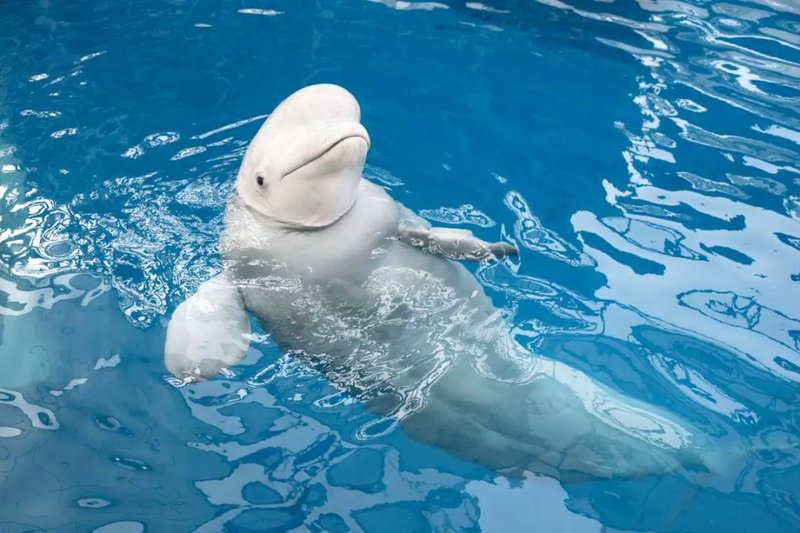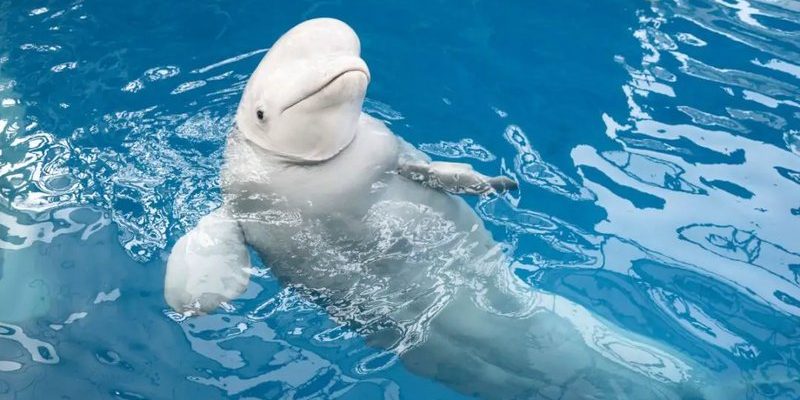
You might not realize how many creatures share features with river dolphins. From other types of dolphins and porpoises to even some fish and reptiles, these animals have their own quirks and similarities. So, let’s dive into the waters of the animal kingdom and explore ten animals that mirror the river dolphin in some aspects. We’ll look at how to identify them and what makes each one special.
1. Amazon River Dolphin
The Amazon river dolphin, also known as the boto, is perhaps the closest relative to the river dolphin you’ll find. These dolphins are a pinkish-gray color, which can be quite striking. Unlike their oceanic relatives, they have broader snouts and a slightly larger dorsal fin.
What really sets the Amazon river dolphin apart is its social behavior. They’re known to be quite playful, often seen splashing around in groups, much like their ocean counterparts. They communicate using a variety of clicks and whistles, which is essential for navigating the murky waters where visibility is low. If you spot a dolphin in the Amazon River, chances are it’s a boto!
2. Yangtze River Dolphin
Yangtze river dolphins, or baiji, once thrived in China’s Yangtze River but sadly face extinction. With a more streamlined body compared to the Amazon dolphin, their skin is often a light bluish-gray.
The baiji were known for their unique “ghostly” appearance, which earned them a somewhat mythical status. If you ever come across one, they’re often described as having a slightly rounded head and a very small dorsal fin. Observing their survival skills in the increasingly polluted Yangtze River is both fascinating and heartbreaking, highlighting the delicate balance of our ecosystem.
3. Irrawaddy Dolphin
The Irrawaddy dolphin is another close relative, found in both freshwater and coastal regions of Southeast Asia. This dolphin has a distinctive rounded forehead and lacks the beak that most other dolphin species possess.
What’s really cool about the Irrawaddy dolphin is their unique communication style. They often produce a variety of sounds, which helps them navigate through their habitat. They’re quite social and are known to interact with local fishermen, even participating in fishing activities—a remarkable trait that shows their intelligence and adaptability.
4. Commerson’s Dolphin
Meet Commerson’s dolphin, often called the “panda dolphin” due to its black-and-white coloration. These little cuties are primarily found in the waters off southern South America and around the Kerguelen Islands.
What makes them unique is not just their looks but their behavior. They are energetic and playful, often seen leaping out of the water in acrobatic displays. In terms of size, they are smaller than many other dolphin species, reaching about 5 to 6 feet, which adds to their charm. If you see a small, lively dolphin with a striking coat, you likely encountered a Commerson’s dolphin!
5. Oceanic Dolphins
Let’s not forget the various species of oceanic dolphins like the bottlenose dolphin. These creatures share several characteristics with river dolphins, such as social behavior and communication skills.
Bottlenose dolphins, for instance, can often be seen in pods, just like river dolphins. They have a more pronounced snout, but when swimming, they display very similar social structures and playfulness. If you visit coastal waters, spotting a pod of bottlenose dolphins jumping through the waves is common, giving you a chance to appreciate their intelligence and social dynamics.
6. Porpoises
While dolphins and porpoises belong to the same family, they have some notable differences. Porpoises tend to be smaller and have a more robust body. They also possess a different tooth shape; their teeth are spade-shaped, unlike the conical teeth of dolphins.
Porpoises are generally shyer and less acrobatic than dolphins, which can make spotting them a rarity. If you’re fortunate enough to observe them, you might notice their rounded snouts and smaller dorsal fins. It’s fascinating how these two groups can belong to the same family yet exhibit such different traits!
7. Manatees
You might think of the manatee as a sea cow, but these gentle giants share a habitat with river dolphins in some areas. They are large, slow-moving mammals with a more robust body shape compared to dolphins.
Manatees are herbivores, feeding on aquatic plants, which is a stark contrast to the carnivorous diet of dolphins. However, both animals share a love for warm waters. If you’re exploring rivers or coastal areas, keep an eye out for these peaceful creatures floating lazily through the waters.
8. Nile River Crocodile
While not a mammal, the Nile river crocodile shares a river habitat with river dolphins in some parts of Africa. These reptiles are powerful hunters with a robust body and strong jaws, unlike the playful nature of the river dolphin.
The crocodile and river dolphin share the river ecosystem but are at opposite ends of the food chain. While river dolphins are often seen swimming gracefully, crocodiles lie in wait, camouflaged in the water. This relationship highlights the delicate balance of predator and prey in river environments.
9. Pygmy Killer Whale
The pygmy killer whale is another interesting mention. It’s a small member of the dolphin family, resembling both dolphins and their larger relatives. Their rounded bodies and dark coloration make them a bit of a mystery.
Pygmy killer whales are often unknown to many, but they exhibit fascinating social behavior and are known to travel in groups. They hunt for fish and squid, showcasing their adaptability. If you ever get a chance to see one, you might notice their similarities to both dolphins and larger whales.
10. Freshwater Stingrays
Lastly, let’s look at the freshwater stingray. While they’re not mammals, these creatures inhabit the same rivers as river dolphins and can be quite captivating. Their flat bodies and long tails allow them to glide gracefully along the riverbed.
Stingrays share the river ecosystem with dolphins, although they occupy a very different niche. While river dolphins swim near the surface, stingrays are usually found on the river floor, blending in with their environment. This difference highlights the variety of life in the same freshwater habitats.
In conclusion, the world of aquatic animals is filled with fascinating creatures, many of which share similarities with the river dolphin. From other dolphins like the Amazon and Irrawaddy to entirely different species like manatees and stingrays, each has its own unique characteristics that contribute to the rich tapestry of life in our rivers. Understanding these animals not only enhances our appreciation for nature but also underlines the importance of conservation efforts to protect these beautiful ecosystems. So next time you think about river dolphins and their watery homes, remember the diverse family they share it with!

